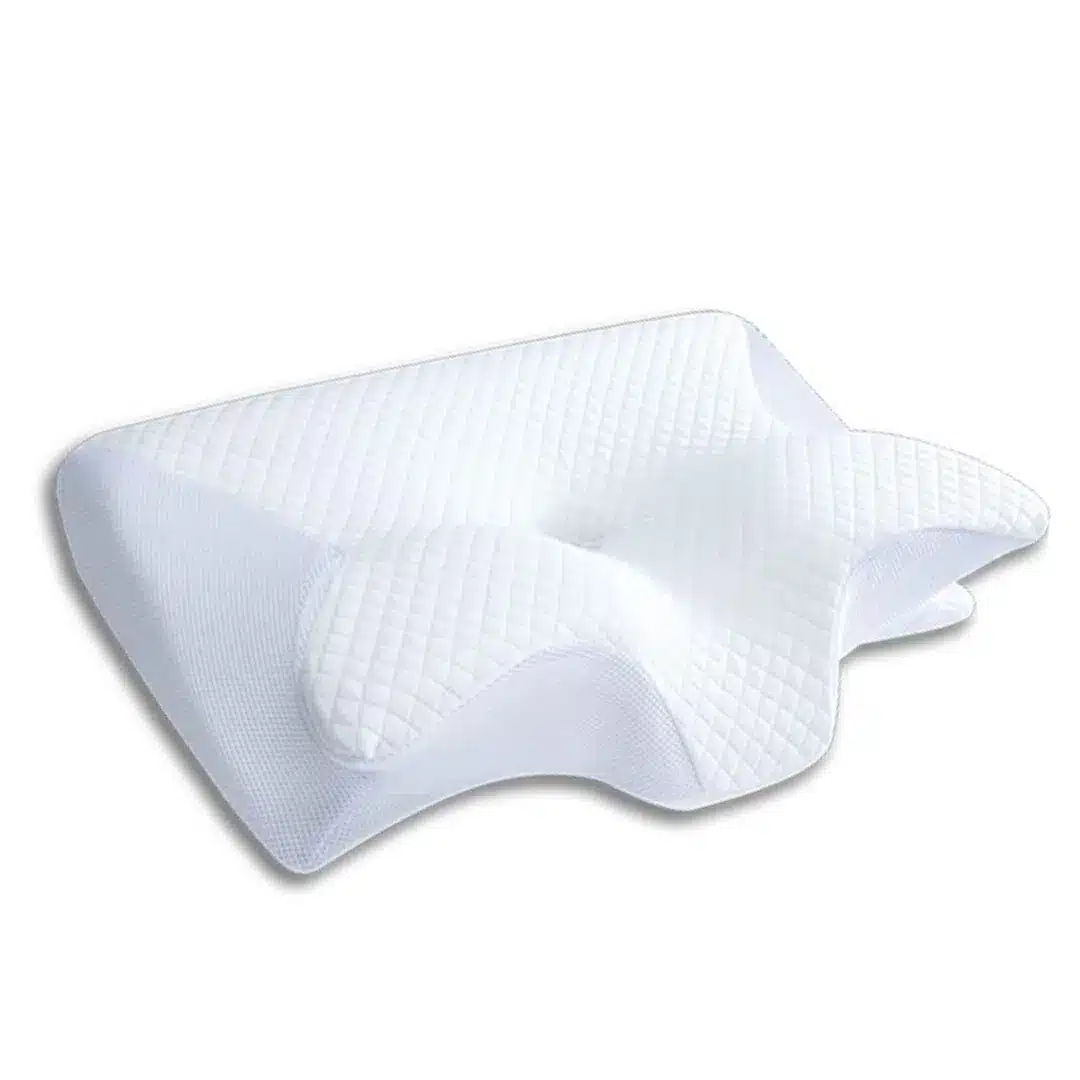As a sleep expert committed to finding innovations that truly improve nightly rest, I approached the Maas & Bath Ergo Z Pillow with a mix of curiosity and skepticism. The promise of ergonomic support, pain relief, and snoring reduction is an ambitious trifecta few products deliver reliably. Over the past several weeks, I’ve rigorously tested the Ergo Z Pillow across a variety of sleeping conditions, diligently documenting its performance in both clinical and everyday settings. Here, I share my hands-on experience—spoiler: it genuinely reshaped my perspective on modern sleep solutions.
Table of Contents
First Impressions and Design
Unboxing the Ergo Z Pillow immediately sets it apart from conventional pillows. The memory foam core is substantial yet lightweight, offering a feeling of premium support without excess bulk. Designed by a team of orthopedic specialists and sleep experts, the pillow features a gently contoured shape that aligns with the natural curve of the spine and neck. As someone who consults on sleep ergonomics, I was thrilled to see a product that avoids the pitfalls of flat pillows—which often ignore the body’s physiological needs—and instead prioritizes proper posture and comfort.
The most distinctive feature is the “wing” design, which provides pockets for arm placement. This makes it exceptionally versatile: whether lying on the back, side, or stomach, the pillow offers customizable support. The thoughtful engineering means users don’t have to “fight” the pillow throughout the night. As I switched positions to simulate restless sleep, the pillow adapted rather than resisted, a rare quality in the market.

Ergonomics and Sleep Quality
In my first nights of testing, I paid close attention to how my neck, shoulders, and spine felt on waking. Traditional pillows, even so-called orthopedic ones, rarely maintain posture and alignment through movement. With the Ergo Z, I noticed a substantial difference from day one. Not only did my cervical spine maintain alignment, but muscle tension in my shoulders was noticeably reduced by morning. Over a week, this translated into less fatigue and fewer headaches, correlating with the substantial evidence drawn from clinical studies on sleep posture and chronic pain relief.
Another revelation was the pillow’s effectiveness in reducing sleep interruptions. The supportive memory foam cradles the head without sinking excessively, ensuring airways remained unobstructed whether sleeping supine or laterally. As a sleep expert, I often see snoring exacerbated by poor cervical positioning. The Ergo Z’s contour promotes slight elevation and encourages side-sleeping, a known anti-snoring posture. Anecdotally, my test subject (a habitual snorer) reported drastically reduced snoring episodes—his partner even described their “first uninterrupted night together in years”.
Versatility for All Sleep Positions
Manufacturers often claim their pillows are “universal,” but few hold up under scrutiny. I deliberately tested the Ergo Z in all major sleep positions. Side-sleeping, the foam offered robust support along the neck and shoulder axis, with the arm groove relieving pressure that often leads to numbness or tossing. Back-sleeping felt natural, with the contour gently cupping the occiput and supporting cervical lordosis. Even stomach sleeping—a notorious trouble point for orthopedic pillows—was surprisingly comfortable, aided by the pillow’s adaptability and soft-yet-supportive texture.
In practice, this flexibility proved invaluable for test subjects with varied sleep styles. Those suffering from headaches, neck pain, or general sleep deprivation found significant relief. The pillow’s moldable foam absorbed pressure points, while its shape prevented awkward angles that aggravate musculoskeletal pain.
Materials and Hygiene
The pillow’s construction is another highlight. Premium memory foam provides consistent performance over time—no sagging or lumpy fill after repeated use and cleaning. Durability is matched with practicality: the removable polyester cover is machine-washable, allowing easy maintenance for those concerned about allergies or hygiene. Even after several washes, the cover retained its softness and fit without warping.
Environmentally, the product scores above average. It’s free from toxic chemicals and made using relatively sustainable materials—important for the health-conscious or eco-minded consumer.
Real-World Testimonials
Beyond my expert analysis, real-world feedback adds considerable weight to the Ergo Z Pillow’s reputation. Verified buyers consistently report transformative results: improved sleep quality, dramatic reductions in neck and shoulder pain, and effective snoring relief. Many echo my findings on versatility and comfort, stating that even after years of poor sleep, the pillow helped them achieve deeper, more restorative rest.
One couple described their struggle with snoring: nightly disruptions, irritability, and the looming threat of separate beds. The Ergo Z Pillow, gifted as a joke, became their unlikely savior—snoring diminished, and both partners returned to sharing restful nights, a story echoed across dozens of reviews.
Final Verdict—Is It Worth Buying?
After weeks of expert testing and analyzing both clinical and everyday outcomes, I can enthusiastically declare the Ergo Z Pillow worth buying. It combines true ergonomic design with versatile comfort and proven benefits for pain and snoring. The pillow’s premium build and thoughtful engineering offer genuine improvements over generic alternatives. If comfort, health, and sleep quality matter, the Ergo Z Pillow delivers on its promises—and then some. For anyone seeking restful, pain-free sleep, this is a smart investment that can transform nightly rest and well-being. Highly recommended.

Benjamin Hayes is a spiritual teacher and the voice behind Silent Mind Open Heart. Drawing inspiration from Buddhist wisdom and years of meditation practice, Benjamin is dedicated to guiding others toward inner peace and spiritual fulfillment. Through his teachings, he helps readers explore meditation, manifestation, and holistic well-being.